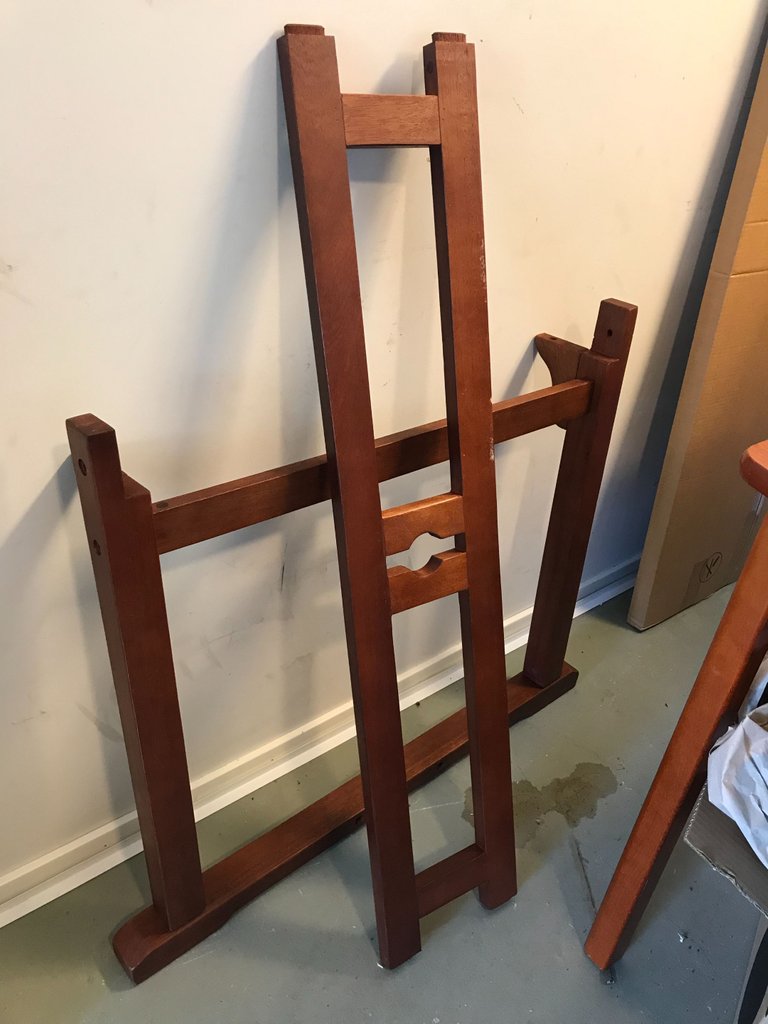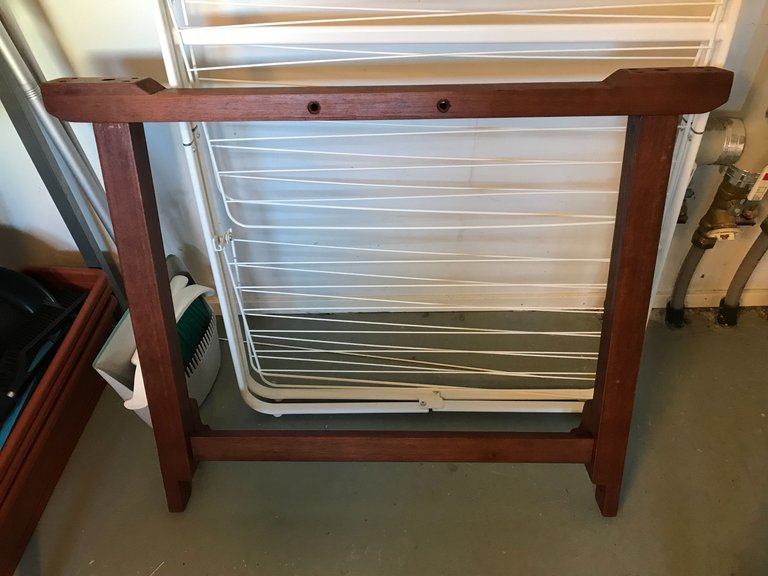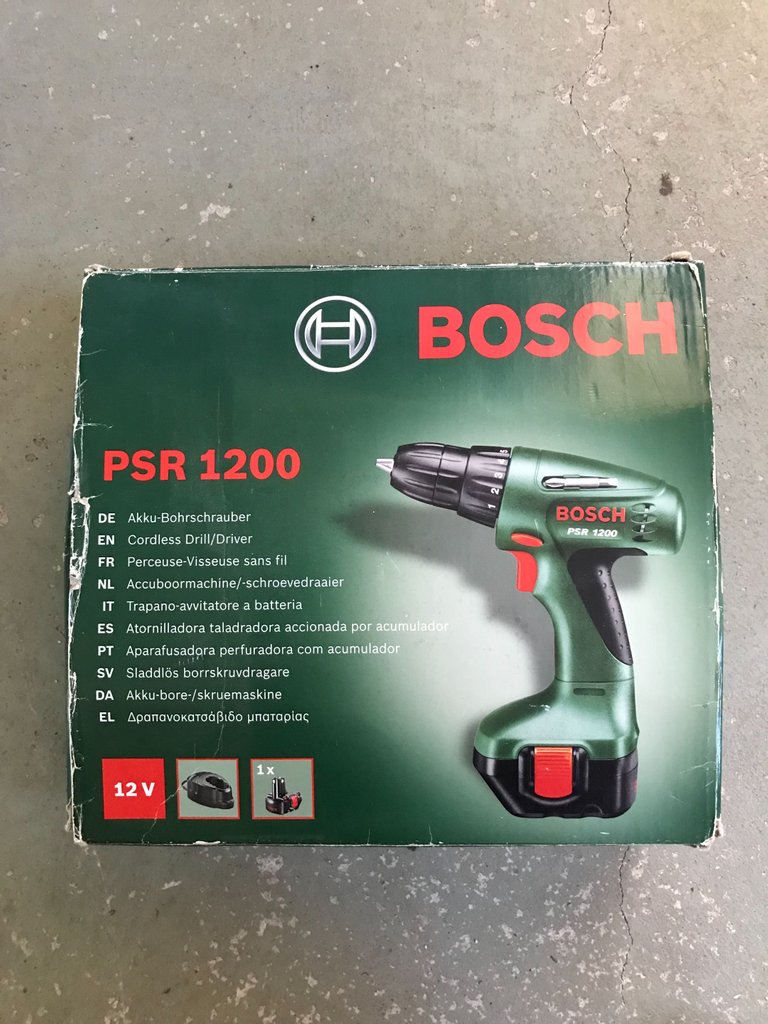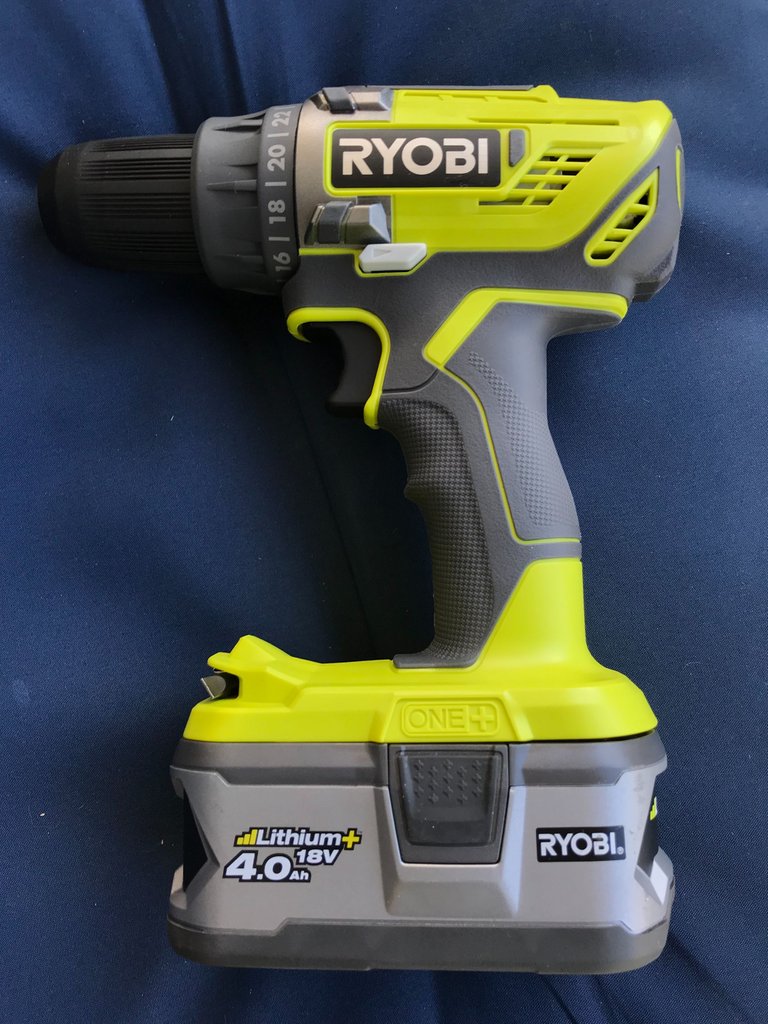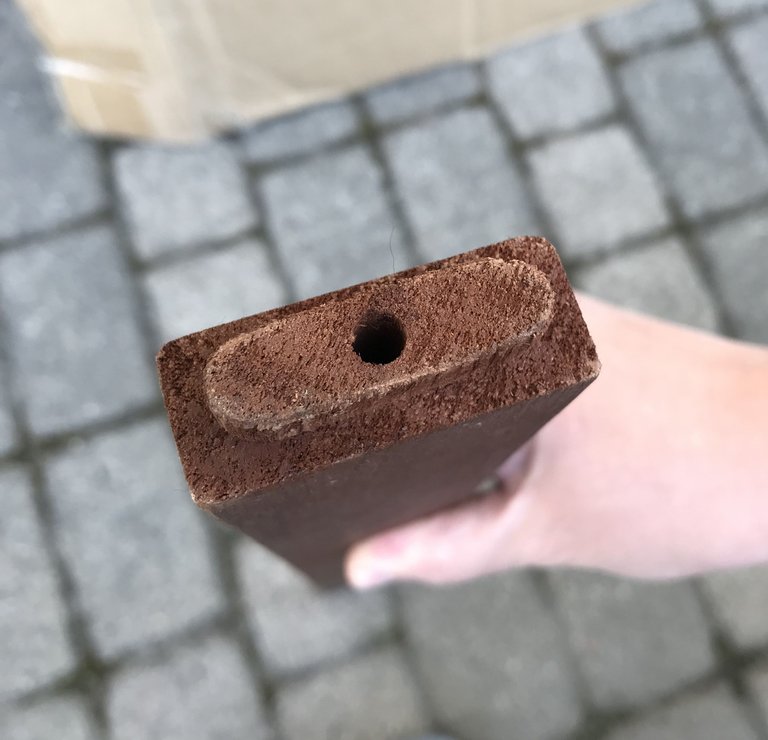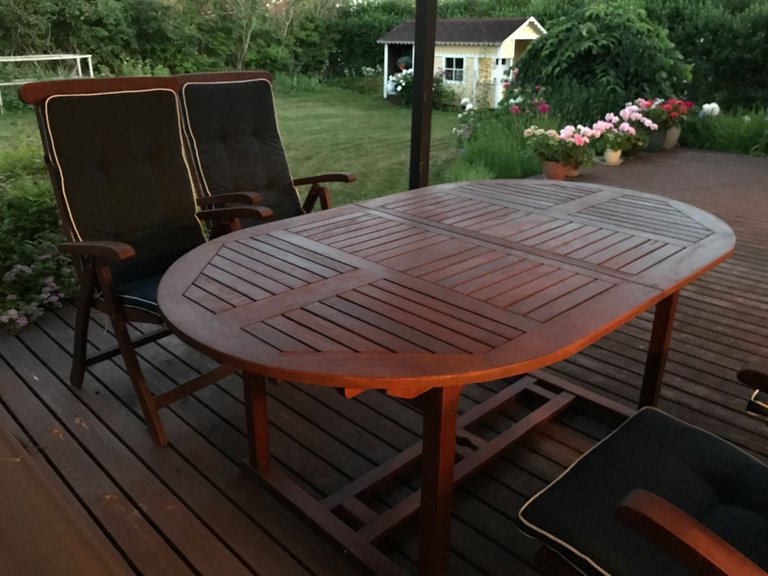My wife had bought a patio table made out of some sort of hard wood. She bought it at a 50% discount. The full price would've been something to the tune of €1000.
It turned out putting it together was harder than I think it should've been given the price tag.
These are the legs and a stabilizing part that connects the two sets of legs.
There were twelve of the screws in the image, four of those bolts and four screws similar to those in the picture but shorter.
The wooden parts were very hard. And the screws and the bolts were too soft. The amount of force I had to use with the first of the long screws was such that the head of the screw was ruined and we had to buy a new one. I had used the manual tool provided with the set.
The battery of our old power drill was finished and I had to buy a new one.
I've already got two of those batteries for the lawn mower, which made this one a bargain: only €79. It's got 50 Nm of torque, which makes using it a fun experience.
I was advised to enlarge these holes by pre-drilling them in order to make the screws fit better and to avoid the risk of splintering the wooden parts.
I did that using what I've dubbed the Milosevic method because we did not have a drill bit that was a perfect match to the width of the screws (minus the threads). (In 1995, when I was participating the European Go Congress in Poland, there was a Serbian guy staying in the room with a friend of mine and I. He was a math student from Belgrade and didn't like the then-president of Serbia, Slobodan Milosevic very much. He told us Milosevic sounded somewhat like one Serbian slang expression for "good f***ing".) In other words, I took a drill bit that was slightly smaller than I estimated would've been the perfect size (which we did not have) and moved it around and up and down in the hole.
As always, this method worked beautifully.
The manufacturer was, Asko, one of the local ones. This sort of thing has never happened with IKEA furniture, by the way. People say bad things about IKEA but my experience is that their stuff is generally well-designed and the instructions for assembly are always clear and thorough enough. Such emphasis on careful preparation is typically Swedish. Well thought-out is half done.
